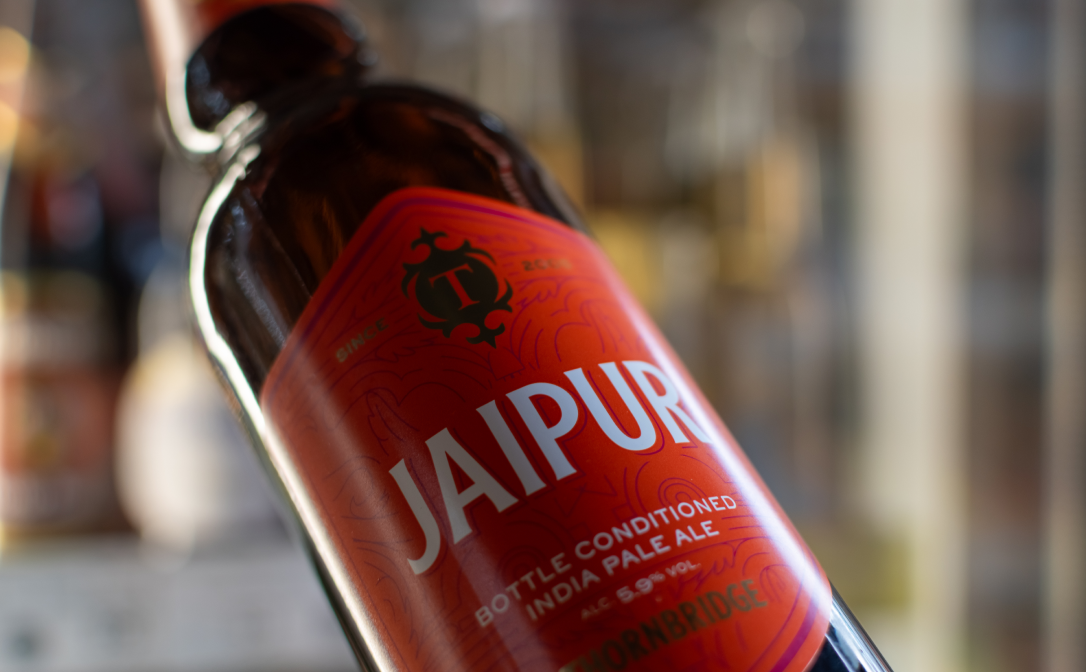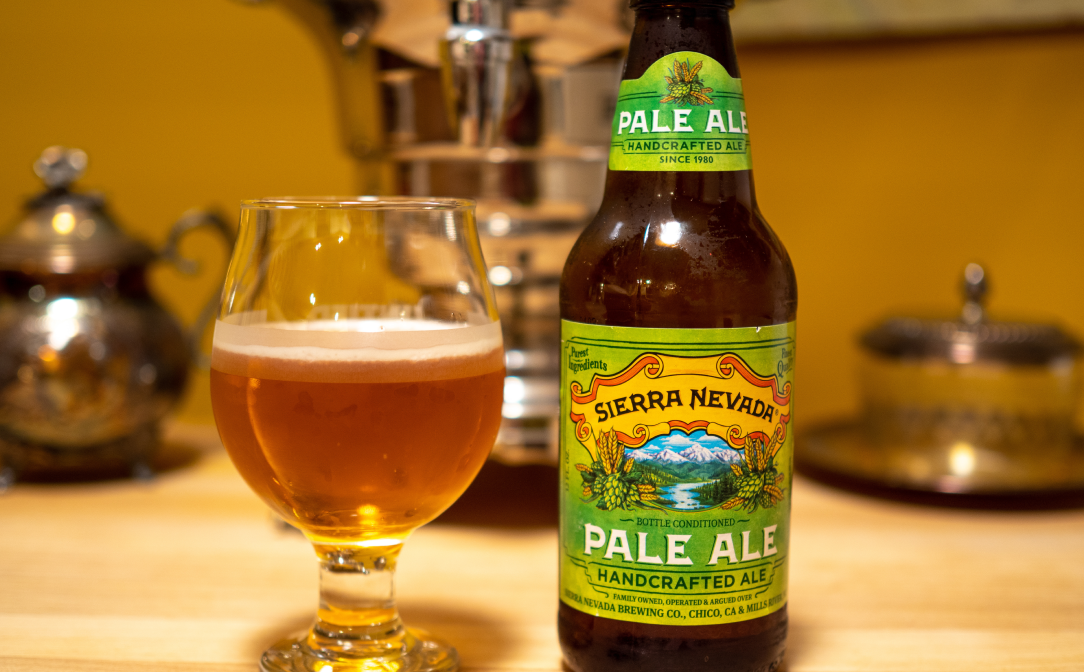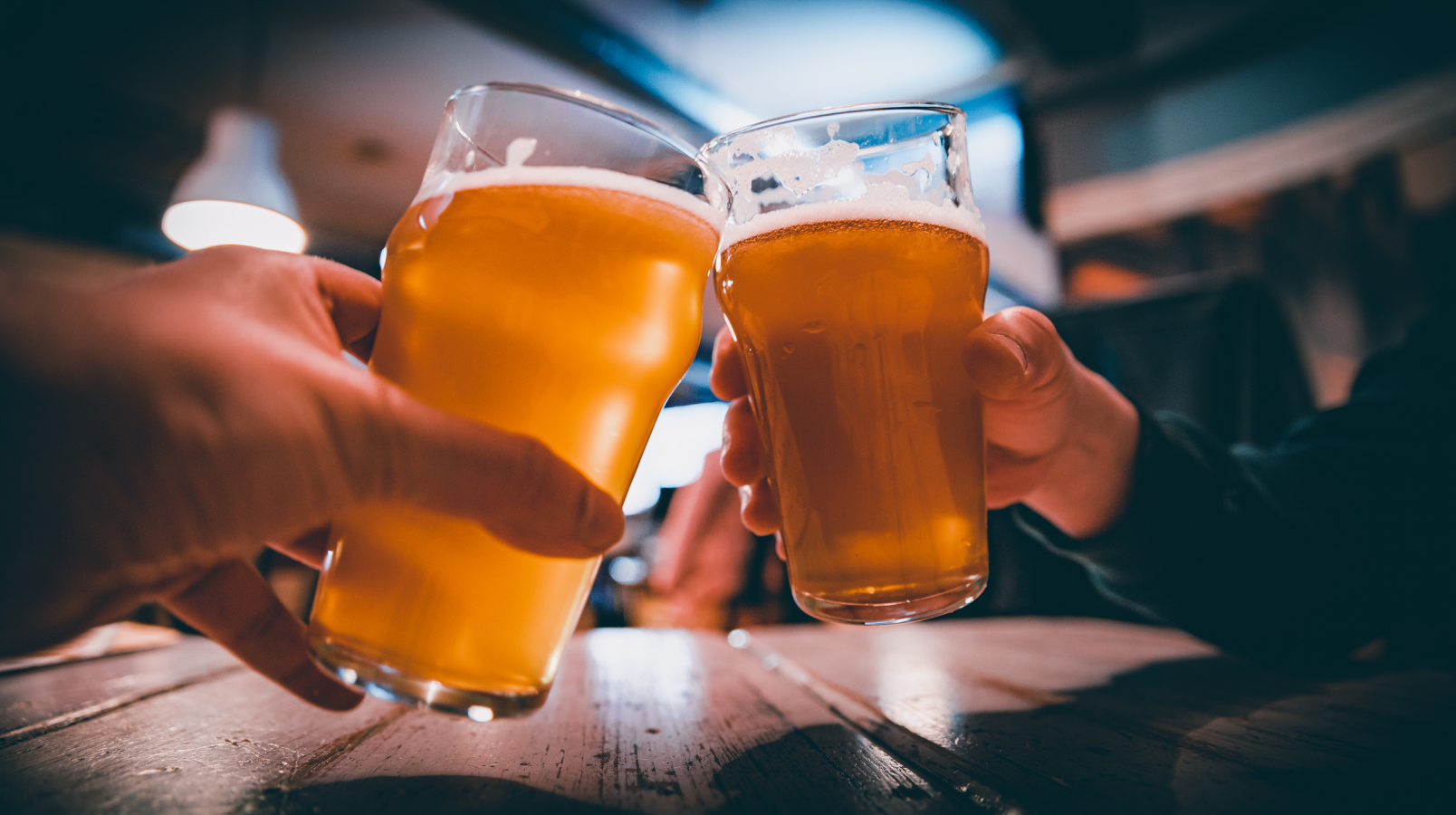This article is by freelance journalist David Jesudason, who has written for The Guardian, Good Beer Hunting, BBC Culture, Pellicle and Vittles. His first book, Desi Pubs, was published by CAMRA Books in 2023. David regularly writes about beer, race and colonial history, and in this guest blog for WSET he explores the differences between American pale ale (APA) and India pale ale (IPA).
You can also sign up to his free weekly email here.
With all the different beer styles - complete with their acronyms, complicated histories, and reinventions - it sometimes feels impossible to quickly define what a drinker can expect to find in their pint glass. How can you sum up in a sentence what the difference is between an India pale ale (IPA) or an American pale ale (APA)?
Perhaps the easiest way is to look at an illustration from Em Sauter in Hooray for Craft Beer! as our first stop. She matter-of-factly states in a caption: “Think of an American pale ale as IPA’s little sister.” So, where an IPA is very hoppy - or hop forward - and high in ABV and bitterness, an APA is the dialled down version of this beer.
But, of course, that’s just the beginning of their differences and that’s before you even begin to retell their complex origin stories.
Where did IPAs come from?
The India pale ale has the most misunderstood history of any beer poured through the centuries. Despite its name, the first IPAs were not from India but were originally sent to India from Britain for soldiers of the East India Company. By its activities, the East India Company ruined much of the local indigenous economy and imposed harsh taxation, which in turn was a direct cause of famine.
As a (blood) product tied to colonial military rule, IPAs were marketed differently later on - imbued with a faux Raj splendour - despite having ties to wealth derived from colonial coercion and exploitative practices. In recent years, the history of the East India Company and the Raj has faced a great deal of critical scrutiny.
David has also explored this complex history in more detail in his piece Empire State of Mind — Interrogating IPA’s Colonial Identity.
The first ‘IPAs’ - note quotation marks - were sent out on East India Company boats in the 1760s and were strong, highly hopped ales due to India’s warm climate: the hops’ antimicrobial properties combined with the high alcohol level aimed to prevent spoilage. These were a cross between a bitter and a barleywine and by the time they arrived in India the hop character had vanished into the Bay of Bengal. They were said to taste more like champagne than beer.
In reality, they were a world away from a modern IPA. Samuel Allsopp was the first to market them as Indian Pale Ales - and tie them to colonial decadence - after he copied Londoner George Hodgson’s recipe but crucially brewed them in Burton, where the minerals in the water further emphasized the beer's hop character. These were bitter British ales or similar to heavily hopped autumn stock beers.

A modern IPA, brewed in the United Kingdom.
Their ABV levels were reduced due to taxation and drinking habits. Consequently, the IPA marched into the 20th century as a sessionable, hop-forward British bitter. Perhaps the greatest remnant is Greene King IPA which still resembles its 1928 incarnation.
Most of today’s IPAs may have evolved from this chequered history but it wasn’t until the US craft beer revolution that the idea of an India pale ale was turned on its head. In fact, if you put a Greene King IPA next to its distant craft cousin the first things you would notice are the differences in appearance: the former is amber or copper and clear, while the latter is often gold and slightly or completely hazy.
Like the contrasting climates, the British trad version is mild while the US incarnation is intense.
What should an IPA taste like?
As mentioned here, US West Coast breweries reconfigured England’s bitter, malt-rich India pale ale as a dry, piney, citrusy blast of sunshine.
A modern American IPA, which nearly every craft brewer in the UK and US has brewed, is likely to have that citrus-y flavour due to the American, Australian or New Zealand hops used in the dry-hopping process - when hops are added late in the brew to extract more of their aroma profile.
These hops give the (modern) IPA its character - their ‘blast of sunshine’ - specifically because American hops typically contain an elevated level of a compound called myrcene that brings the resinous aroma associated with these intensely hoppy beers.
Often also described as ‘fruit bombs,’ these IPAs can range from medium ABVs right up to 10% (and beyond). Aside from the hops, they often use base malt, American ale yeast and have a high bitterness. Ironically, I believe they pair very well with fare from India, especially dishes made with a warming masala spice blend.
There are many offshoots from India pale ales, such as black IPAs (brewed with roasted malt but still very hoppy), white IPAs (an IPA with witbier yeast) but broadly you can expect the same emphasis on fruity, zesty hop aromas and bitterness.
Where did APAs come from?
Like the IPA, American pale ales were a US (craft) reinvention of a British ale. In the late 1970s onwards, brewers stateside took the recipe for English pale ale and added American hops. The British pale ale has its roots in the 1700s, when new fuel sources were used in kilning, enabling the production of lighter coloured malts and therefore beers.
But - like the India pale ale - it was the Burton water that really influenced the British pale ale. From the 19th century, the Staffordshire town’s hard water rich in calcium sulphate improved beer’s clarity and emphasised its bitterness.
Burton’s pale barley malt helped create light coloured beers (as also seen in the India pale ales), and pale ales became renowned for their medium body (feeling in between thick and thin on the mouth), and a colour edging towards dark gold and a sessionable strength (4.5%-5.5%).
British pale ales followed this formula and were brewed using English hops which imparted their bitterness and herbal flavour and aroma. Compared to an American pale ale, the UK ancestor had a smoother bitterness, earthy and herbal hop aromas, and malty, bready flavour.#

An APA from the Sierra Nevada Brewing Company.
The first American pale ales were synonymous with two breweries: Anchor and Sierra Nevada Brewing Company. The latter’s American pale ale became the biggest-selling craft beer.
What should an APA taste like?
In 1980, Sierra Nevada’s Pale Ale caused a shockwave to a US drinking scene unused to bold hop flavours. Brewed with Cascade hops, it defined the American pale ale style by being full of piney, citrus flavour. Like its UK inspiration, the malt gave the APA its balance offsetting the hop bitterness with caramel and bready tones.
Sierra Nevada Brewing claim this was the precursor to the modern ‘craft’ IPA, and it was certainly a dialled-up version of the British pale ale in terms of bitterness, strength (which could jump above 6%) and hoppiness.
It’s fair to say an American pale ale - in terms of flavour, colour, and mouthfeel - takes its cue from Sierra Nevada’s American pale ale. So, expect fruity, floral, tropical tones from the American, Australian or New Zealand hops used, with the malt imparting some sweetness and the beer’s colour - ranging from light gold to light amber. It shares the medium body and smoothness of its UK brother.
The key differences between IPA and APA
As mentioned, an India pale ale is more intense compared to its little sister American pale ale. A typical craft India pale ale will be heavily reliant on the dry hopping process when hops are thrown in late into the brew - often into the fermentation tanks - so that the aroma and flavours become more intense and avoid the bittering notes hops can add.
An India pale ale is likely to be a lot higher in ABV than an American pale ale and is likely to be more bitter. Consequently, an American pale ale will pair better with milder foods - medium-flavoured cheeses - than an India pale ale which can come alive when complimenting powerful spices - think Mexican and Indian dishes.


